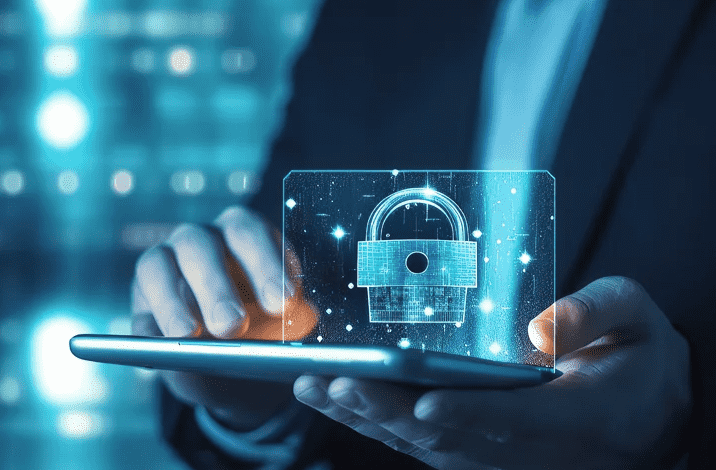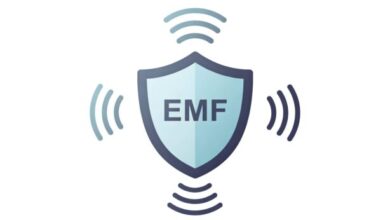Cybersecurity Solutions: How They Shield Your Business from Threats

Introduction
In today’s digital landscape, the reliance on technology has reached unprecedented levels, making businesses of all sizes vulnerable to various sophisticated cyber threats. These dangers, which vary from ransomware attacks to data breaches, present serious risks to a company’s financial viability and reputation in addition to sensitive data. The rise of these threats underscores the necessity of effective cybersecurity solutions, which act as a bulwark against cyber adversaries and ensure business continuity. This article delves into various cybersecurity solutions and elucidates their vital role in shielding businesses from these potential threats.
The Importance of Cybersecurity Solutions
Cybersecurity solutions are indispensable in establishing a secure digital environment for businesses across all industries. They comprise a spectrum of tools and practices designed to defend systems, networks, and data from malicious activities that aim to exploit vulnerabilities. Due to the quick speed of digital transformation, businesses increasingly depend on these solutions to protect their operations from data theft, illegal access, and disruptions brought on by cyber incidents.
Companies providing cyber security services in Boca Raton, FL, help organizations navigate the intricate and evolving cybersecurity landscape. These services offer customized strategies that cater to the specific requirements of different industries, ensuring comprehensive protection against emerging threats.
Types of Cybersecurity Solutions
A robust cybersecurity framework typically employs a combination of solutions, each functioning as a critical component within the broader security ecosystem. Some of the core solutions include:
- Firewalls: As a protective barrier, firewalls separate secure internal networks from potentially dangerous external ones. They regulate incoming and outgoing traffic based on security rules, preventing unauthorized access.
- Intrusion Detection Systems (IDS): IDS is essential for monitoring network traffic for indications of recognized threats or suspicious activity. They enable prompt responses to possible intrusions by sending administrators alerts.
- Antivirus and Anti-Malware Software: These applications are made to identify, stop, and eliminate viruses, malware, and other harmful software that can jeopardize the integrity of a system.
- Encryption Tools: Encryption is a vital process that transforms readable data into an unreadable format, ensuring the security of sensitive information even if it gets intercepted.
- Identity and Access Management (IAM): IAM solutions reduce the possibility of unwanted access and possible internal threats by managing user identities and controlling access to vital systems.
Proactive vs. Reactive Cybersecurity Strategies
An effective cybersecurity strategy should incorporate both proactive and reactive elements. Proactive measures aim to prevent threats from infiltrating systems and reduce vulnerabilities before an attack occurs. This involves regular system updates, comprehensive employee training, and continuous network monitoring to detect potential threats. Such measures significantly diminish the chances of a cyber incident by fortifying defenses in advance.
Conversely, reactive strategies are essential for dealing with incidents, focusing on minimizing damage and facilitating recovery. Implementing incident response plans, which offer a precise road map for containing and managing breaches, is part of this. Together, these strategies form a holistic approach that ensures businesses are prepared to face cyber threats and recover swiftly from disruptions.
The Role of Employee Training in Cybersecurity
Employees form the first line of defense against cyber threats, making training a critical component of any cybersecurity strategy. Good training lowers the likelihood of successful attacks by giving employees the skills to recognize and address such threats. Programs focusing on phishing awareness and best practices for safe internet use enhance an organization’s security posture.
By cultivating a culture of cybersecurity awareness, businesses empower employees to remain vigilant and proactive. This shared responsibility for security across all levels of the organization protects the company and fosters an environment of collective accountability, enhancing the overall resilience against cyber adversaries.
Advantages of Managed Cybersecurity Services
For many businesses, partnering with managed cybersecurity service providers offers a strategic advantage by providing expertise and resources that may not be accessible internally, especially for smaller companies. Outsourcing cybersecurity functions allows organizations access to round-the-clock monitoring, advanced threat detection, and comprehensive incident response capabilities without the financial burden of building a substantial in-house team.
Managed services also offer scalability, allowing businesses to tailor their security frameworks to their growth. This flexibility results in better protection and peace of mind, guaranteeing that companies may adjust and maintain a high level of security without going over budget or using excessive resources.
Future Trends in Cybersecurity Solutions
As technology advances, the landscape of cybersecurity solutions is expected to evolve significantly. Emerging technologies like artificial intelligence (AI) and machine learning are projected to transform conventional defenses by giving companies powerful tools to process and analyze massive amounts of data instantly. This capability allows for the rapid identification of patterns and anomalies, leading to quicker threat detection and response, thereby minimizing the impact of cyber incidents.
For industry experts, the spread of the Internet of Things (IoT) also presents new security challenges. Innovative strategies that can adjust to the particular vulnerabilities present in IoT ecosystems are needed to secure an expanding network of linked devices. Businesses must be knowledgeable and flexible as these trends grow, ensuring their cybersecurity plans change with new technology to preserve a strong security posture.
Conclusion
In an era of digital connectivity and innovation, cybersecurity solutions are an indispensable component of a resilient business strategy. They protect enterprises from the myriad cyber threats that could compromise their operations and reputation. Companies safeguard their assets by investing in comprehensive cybersecurity measures and cultivating trust among customers and stakeholders. As the threat landscape undergoes continuous transformation, embracing a proactive, informed, and adaptive approach is essential for maintaining robust security. Integrating advanced technology with dedicated employee engagement ensures long-term resilience and preparedness against cyber adversaries.




